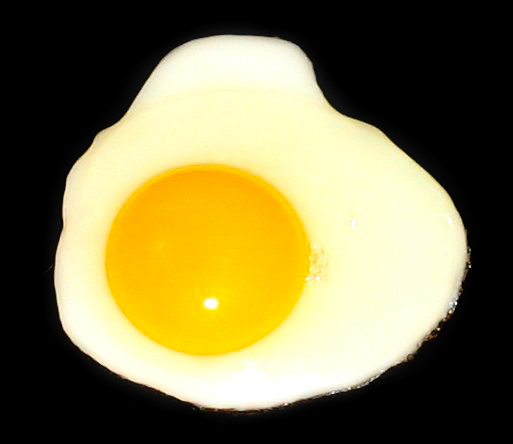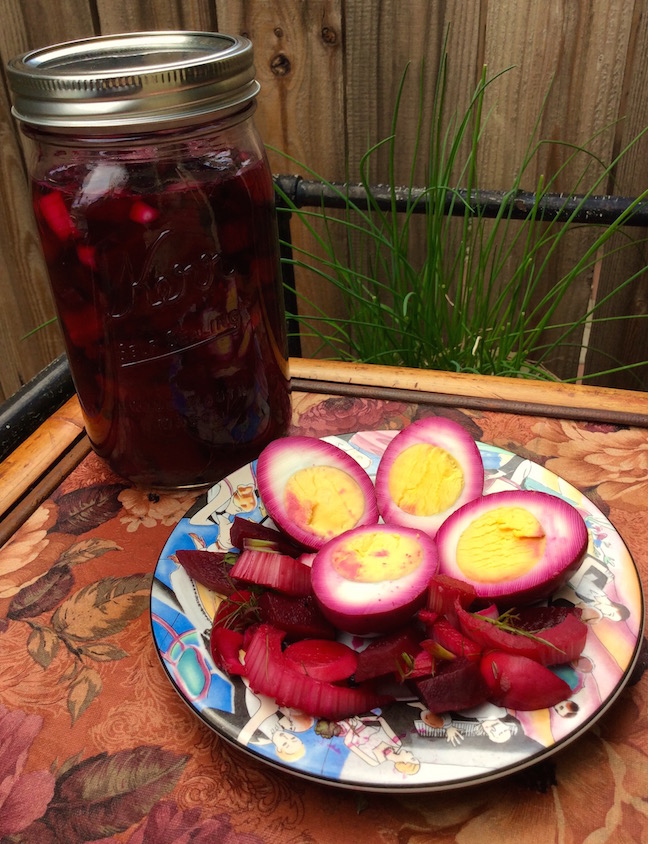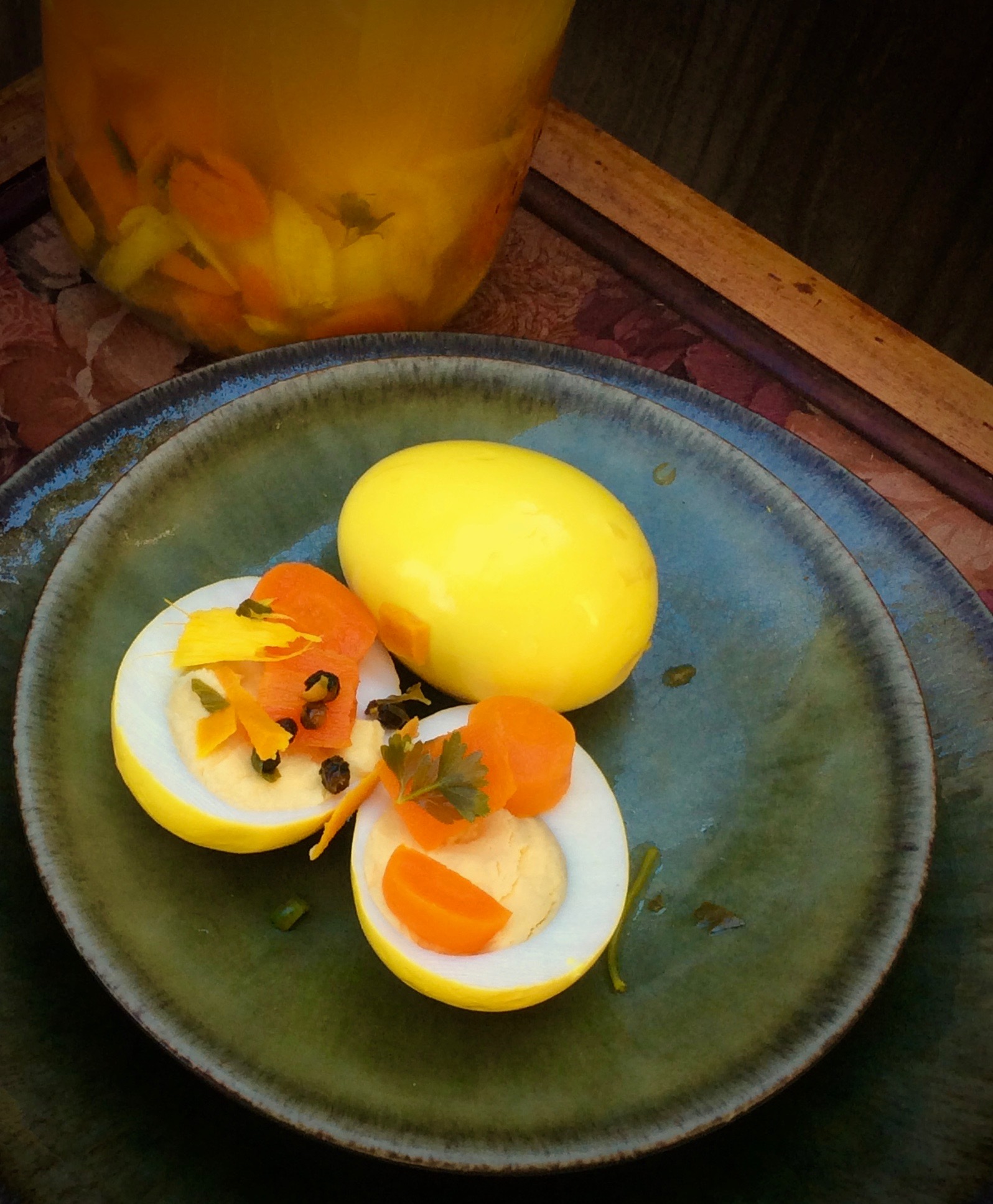The Upside of Down
April 11, 2020
“And so I wait, like a lonely house
till you will see me again and live in me.
Till then my windows ache.”
~ Pablo Neruda, Sonnet LXV

It’s OK to be sad. We are individually and collectively grieving so much that has been lost to the current crisis. We are all in this together, as they say, but “this” can seem a lonely and precarious place to be.
Feeling down is often perceived as a failure, but low is a perfectly natural location to find yourself when the balloon of hope and enthusiasm that holds us up in more certain times is temporarily deflated.
Be patient with your heart if you feel it sinking at times. In fact, giving your heart the space to lay low for awhile can actually be a good thing. For example, if you happen to be a raw egg, being down is a position full of potential. Here’s why:
The best way to test the freshness of an egg is to gently drop it into a bowl of water.
If the egg sinks and stays at the bottom of the bowl, laying on its side, it is very fresh.
If the egg stands up partially or even upright, it is still safe to consume, but should be cooked and eaten, used for baking or hard boiled very soon.
If, however, the egg floats to the top, it is no longer fresh and should be thrown away.
The reason this test works is due to the porous quality of eggshells. Air enters into the egg through its porous shell, decreasing the egg’s shelf life. As time passes and air continues to enter the shell, the egg’s buoyancy increases, eventually causing it to float.
The egg that appears to float above it all may be close to finished, while the egg that is temporarily down can look forward to one day emerging from its shell, with its golden heart sunny side up.

So take heart, all of you good eggs out there who might be feeling low. Give yourself permission to be exactly where you are, for now. There’s an upside to being down.
~~~~~~~~~
Remember, Easter Bunnies are essential workers during this quarantine, so give them your thanks and plenty of space to work ?
After your living room Easter egg hunt is over, here are three ways to give new life to your hard boiled eggs: Pretty Pink Pickled Eggs and Spring Veggies; Turmeric and Ginger Pickled Eggs and Springtime Noodle Soup with Shoyu (soy sauce-flavored) Eggs.

Pretty Pink Pickled Eggs and Spring Veggies
You will need a quart-sized mason jar with lid for these. If you can find them, use eggs from happy hens, such as Vital Farms pastured eggs or eggs from a local hen house. Eggs from pastured hens contain up to 20 times more omega-3 acids than factory hens.
1 medium beet, scrubbed and cleaned
1 & 1/2 cups water (to cook beets)
1/2 teaspoon salt
1 tablespoon organic sugar
1 cup red wine vinegar (and a bit more, if needed)
2 cloves garlic, peeled and cut in half
2 fennel stalks with tops
2 spring onions or 3 green onions
2 small red or pink radishes
1 tablespoon chopped fresh Italian (flat leaf) parsley
1/2 teaspoon black peppercorns
6 hard cooked eggs, cooled and peeled
Slice beet into thin, 1-inch pieces. Add the beets and water to a large saucepan and cook, covered, over medium-low heat until tender, about 30 minutes. Make sure you have 1 cup of cooking water remaining in the pan (it will be colored by the beets). Add more water to make 1 cup, if necessary.
Meanwhile:
Clean and dice the bulb (white part) of the fennel. Save some of the fronds and chop them fine.
Clean the radishes and slice thinly.
Clean, trim and slice the spring onions, include some of the green part.
After the beets have finished cooking, while the liquid is still warm, add salt, sugar and vinegar and stir to dissolve. Add the garlic, fennel, radishes, onions, parsley and peppercorns. Stir to combine.
In a quart-sized mason jar with lid, layer eggs and veggies until jar is filled. Pour liquid over to cover. If there is not enough liquid to cover, you can top it off with a bit more red wine vinegar. Seal jar with the lid and give a gentle shake to mix contents. Refrigerate for 24 hours, gently shaking the jar occasionally.
To serve, cut eggs in half to reveal the pretty color. Serve with some of the veggies, along with crackers, chips or bread.
Serves 3 to 6 as an appetizer

Turmeric and Ginger Pickled Eggs
These pretty yellow eggs make a delicious and eye-catching appetizer for a spring lunch. The flavor is tangy, sweet and lightly salty with delicate hints of turmeric and ginger.
You will need a quart-sized mason jar with lid for these. They take 24 to 48 hours to pickle. I let mine pickle for 44 hours to get the color in the photo above. If you’d prefer a paler yellow, let them pickle for less time.
1 cup sliced carrots
2 cloves of garlic, peeled and cut in half
2 & 1/2 inch piece of fresh turmeric, peeled and thinly sliced
Or
2 teaspoons ground turmeric
1 & 1/2 cups water
3/4 teaspoon salt (I used Himalayan Pink Salt)
1 tablespoon organic sugar
3/4 cup apple cider vinegar (a bit more, if needed)
1-inch piece of fresh ginger, peeled and thinly sliced
1 tablespoon chopped fresh Italian parsley
Optional: 1 small fresh hot chile, diced fine
1/2 teaspoon black peppercorns
8 hard-cooked eggs, cooled and peeled
Add the carrots, garlic and turmeric with the water to a large saucepan. Bring to a boil, reduce heat and simmer, covered, over medium heat for about 15 minutes. Remove from heat. Make sure you have 1 cup of cooking water remaining in the pan. Add more water if necessary.
After the veggies have finished cooking, while the liquid is still warm, add salt, sugar and vinegar and stir to dissolve. Add the ginger, parsley, chile (if using) and peppercorns. Stir to combine.
In a clean, quart-sized mason jar with lid, layer eggs and veggies until jar is filled. Pour liquid over to cover. If there is not enough liquid to cover, you can top it off with a bit more vinegar. Seal jar with the lid and give a gently shake to mix contents.
Refrigerate for 24 to 48 hours, gently shaking jar occasionally.
To serve:
Cut eggs in half to highlight the pretty color. Serve with some of the veggies, along with crackers, chips or bread or on top of butter lettuce or other salad greens. You can also mix diced pickled eggs with some mayo for an instant, eye-catching egg salad.
Serves 4 to 8

Springtime Noodle Soup with Shoyu Eggs
Shoyu (soy sauce) eggs make a tasty snack. It’s a quick and easy way to make left-over Easter eggs interesting. Simmering boiled eggs in soy sauce creates a dark caramel color on the outside of the egg and makes for a nice contrast when you slice them open. In this recipe, I have added them to a simple Japanese-style soup, but you could also serve them alone, as an appetizer.
You can sometimes find prepared fresh ramen noodles in the refrigerated section of your grocery store. Otherwise, buy dried ramen or chow mein noodles or vermicelli for this recipe and cook and drain just before making the soup. You will need 12 oz or 1 & 1/2 cups of noodles after cooking. If you are using the curly, instant type of ramen, you can add the dry noodles into the soup to cook, as you would for instant ramen mixes.
For Shoyu Eggs:
4 hard boiled eggs, peeled
1/2 cup organic soy sauce
For Soup:
4 cups miso broth or chicken broth
2 green onions, trimmed and chopped
1 medium carrot, grated
4 button or cremini mushrooms, cleaned and sliced
2 teaspoons organic soy sauce
12 ounces (1 & 1/2 cups) prepared ramen or chow mein noodles
Pepper to taste
Make Shoyu Eggs:
In a 10-inch saucepan, heat the soy sauce over medium-high heat. When the soy sauce just begins to bubble, reduce heat to medium and add the eggs. Using a soup spoon, coax the eggs around the pan in the soy sauce to coat. Keep rolling the eggs gently around the pan until the soy sauce is super-thick and the eggs are a dark caramel color. Turn off heat. Remove eggs to a plate to serve or set aside, if making soup.
Make Soup:
In a medium saucepan, heat broth, onions, carrot, mushroom and soy sauce over medium-high heat.
If using the curly/instant ramen noodles:
Once soup is boiling, add noodles and boil for about 3 minutes, breaking up noodles and stirring with a fork, then turn off heat. Season to taste with pepper. Stir in sesame oil.
If using prepared fresh ramen or chow mein noodles:
Once soup is boiling, reduce heat to a simmer and add cooked noodles. Stir and simmer just enough to heat the noodles (about a minute). Turn off heat. Season to taste with pepper. Stir in sesame oil.
Divide soup, noodles and vegetables among two bowls. Cut Shoyu Eggs in half and arrange on top of soup. Serve immediately.
Serves 2
Recent Comments